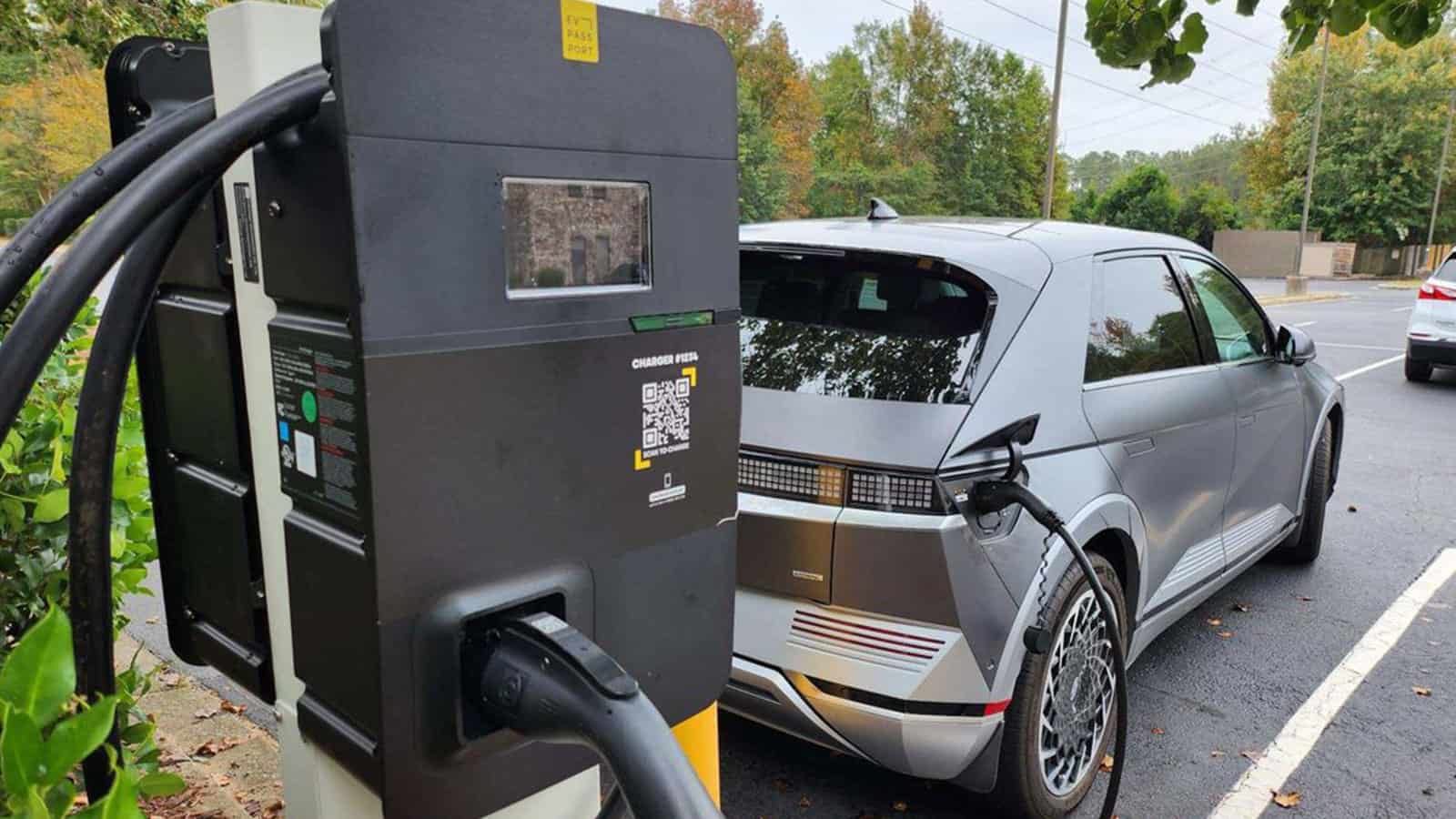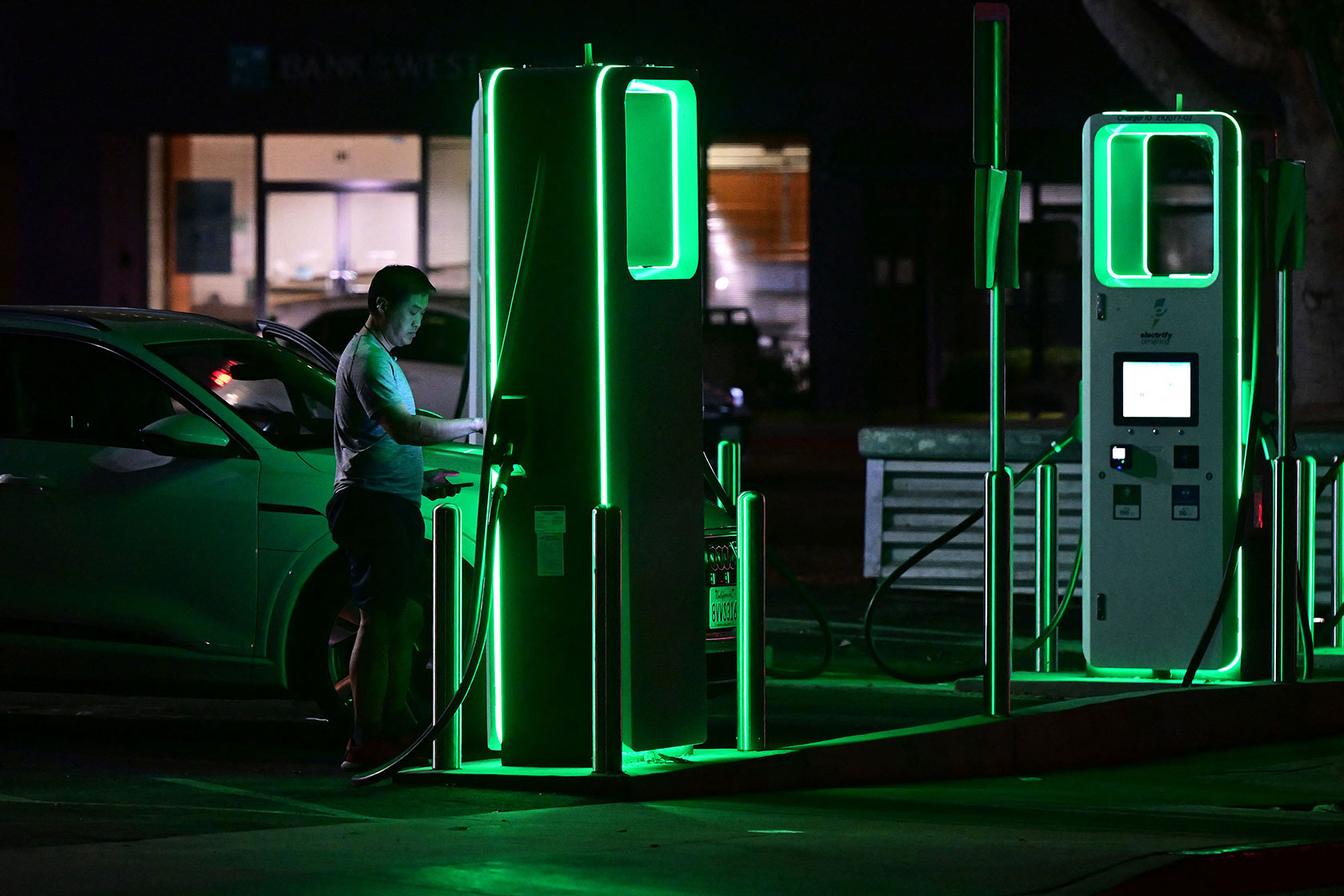Leading EV Charging Information: Key Updates on Facilities and Advancement

Current Advancements in Fast-Charging Innovation

In addition, developments in battery innovation, consisting of improved thermal administration systems and greater energy density batteries, enhance fast-charging capacities. These developments reduce the threat of battery degradation during fast charging, making certain longevity and performance for EV owners.
Furthermore, the assimilation of clever charging services is improving individual experience, making it possible for real-time monitoring and dynamic pricing designs. EV Charging news. This versatility permits vehicle drivers to optimize charging times and costs based on grid demand
As automakers remain to purchase fast-charging networks, the partnership in between market stakeholders is critical. Collaborations in between billing terminal carriers and automotive manufacturers are paving the way for considerable insurance coverage, inevitably cultivating an extra durable EV environment. These improvements are essential in sustaining the shift to sustainable transportation.
Government Initiatives for Billing Development
Government efforts play a critical function in the growth of electrical automobile (EV) billing facilities, facilitating the transition to lasting transport. Different federal and state programs are being implemented to boost billing ease of access, reduce the economic worry on consumers, and promote the fostering of electric cars.
Notably, the united state government has actually alloted considerable funding via the Facilities Investment and Jobs Act, which sets aside $7.5 billion for EV charging network growth across the nation. This financing is focused on releasing thousands of brand-new charging terminals, especially in underserved areas, consequently dealing with array stress and anxiety among prospective EV buyers.
Furthermore, numerous states are establishing legislation to simplify the permitting procedure for charging station installments, which is important for accelerating implementation. Incentives such as tax obligation credit histories and discounts for both consumers and organizations are also being presented to urge the setup of billing infrastructure.
Additionally, public-private collaborations are increasingly ending up being an emphasis, leveraging private investment to enhance government funding. These efforts emphasize a collaborative method crucial for building a efficient and extensive EV charging network, eventually adding to a greener and even more sustainable future.
Innovative Battery Solutions Enhancing Effectiveness
Changing the landscape of electrical vehicle (EV) technology, ingenious battery options are dramatically boosting efficiency and performance. Advancements in battery chemistry, especially with lithium-sulfur and solid-state batteries, are causing boosted power thickness, which permits longer arrays and faster billing times. These brand-new battery kinds have the possible to outperform traditional lithium-ion batteries by offering greater abilities while minimizing weight, thereby improving general lorry performance.
Furthermore, growths in battery administration systems (BMS) are maximizing power usage and expanding battery life-span. Smart formulas keep track of battery health and wellness and performance, allowing real-time changes to charging and discharging procedures. This not just enhances the efficiency of the battery however likewise makes sure a much more dependable and lasting power resource for EVs.
Moreover, the assimilation of recycling technologies is resolving the environmental influence of battery production and disposal. Innovations in second-life applications for EV batteries are promoting their usage in power storage space systems, adding to a circular economy.
As these ingenious battery remedies proceed to evolve, they guarantee to transform the EV market, making electric cars a lot more obtainable and attractive to a broader audience while supporting worldwide sustainability goals.
Collaboration In Between Automakers and Charging Networks
Recognizing the important need for a durable billing facilities, automakers are increasingly collaborating with billing network service providers to boost the EV ownership experience (EV Charging news). These collaborations aim to produce a seamless billing ecological community that profits customers and supports the transition to electrical automobiles
Major auto brand names are signing up with pressures with well-known billing networks to expand their billing station coverage, guaranteeing chauffeurs have accessibility to reliable and hassle-free charging choices. For circumstances, collaborations with networks like ChargePoint and Electrify America enable automakers to incorporate charging remedies straight right into their automobiles' navigating systems, assisting individuals to the nearest terminals and giving real-time accessibility updates.
Furthermore, these cooperations often cause the advancement of fast-charging innovations that dramatically lower the moment needed to recharge an EV. By merging resources and expertise, automakers and billing networks can introduce quicker, creating services that satisfy the growing need for electrical mobility.
On top Look At This of that, joint campaigns may also result in even more standard charging methods, which can alleviate customer complication and promote wider EV fostering. On the whole, these strategic alliances are pivotal in building a efficient and straightforward billing infrastructure that fulfills the demands of a broadening electric vehicle market.
Challenges Facing EV Billing Framework
As the electric car market remains to expand, numerous challenges are surfacing that prevent the development of a comprehensive charging infrastructure. One of the key barriers is the inadequate number of charging stations, specifically in rural and underserved metropolitan areas. This gap produces range anxiety among potential EV purchasers, discouraging them from making the switch.
In addition, the absence of standardization accountable technology makes complex the framework landscape. Variants in plug types and charging speeds can create confusion for individuals and enhance operational complexities for charging network operators. Moreover, the integration of charging terminals right into existing electrical grids positions substantial challenges. Lots of areas encounter ability limitations, requiring substantial investments in grid upgrades to fit enhanced demand.
Another pressing issue is the high cost connected with the setup and maintenance of billing stations, which can be an obstacle for both public entities and exclusive businesses. Regulative hurdles and zoning restrictions can postpone the deployment of charging infrastructure, impeding progress in expanding essential services. Dealing with these challenges will be crucial for promoting a durable EV ecological community that sustains the shift to Recommended Reading lasting transportation.
Verdict
In final thought, the continuous advancements in EV billing modern technology, sustained by substantial government efforts and ingenious battery solutions, are vital for the growth and efficiency of electrical automobile framework. Partnerships between car manufacturers and charging service providers further enhance station coverage, addressing the expanding need for available billing alternatives. Regardless of difficulties that persist within the EV charging landscape, these developments symbolize a positive trajectory towards an extra effective and lasting electric automobile community.
Innovations in billing infrastructure have led to the development of ultra-fast battery chargers capable of delivering up to 350 kW of power, significantly lowering charging times. Variations in plug types and billing speeds can create complication for customers and increase functional intricacies for billing network operators.In conclusion, the continuous developments in EV charging innovation, supported by substantial government campaigns and innovative battery solutions, are important for the growth and effectiveness of electric lorry infrastructure. Collaborations in between automakers and billing suppliers even more boost terminal protection, attending to the growing need for easily accessible charging choices. In spite of challenges anchor that continue within the EV charging landscape, these developments indicate a favorable trajectory towards a more lasting and efficient electric lorry community.